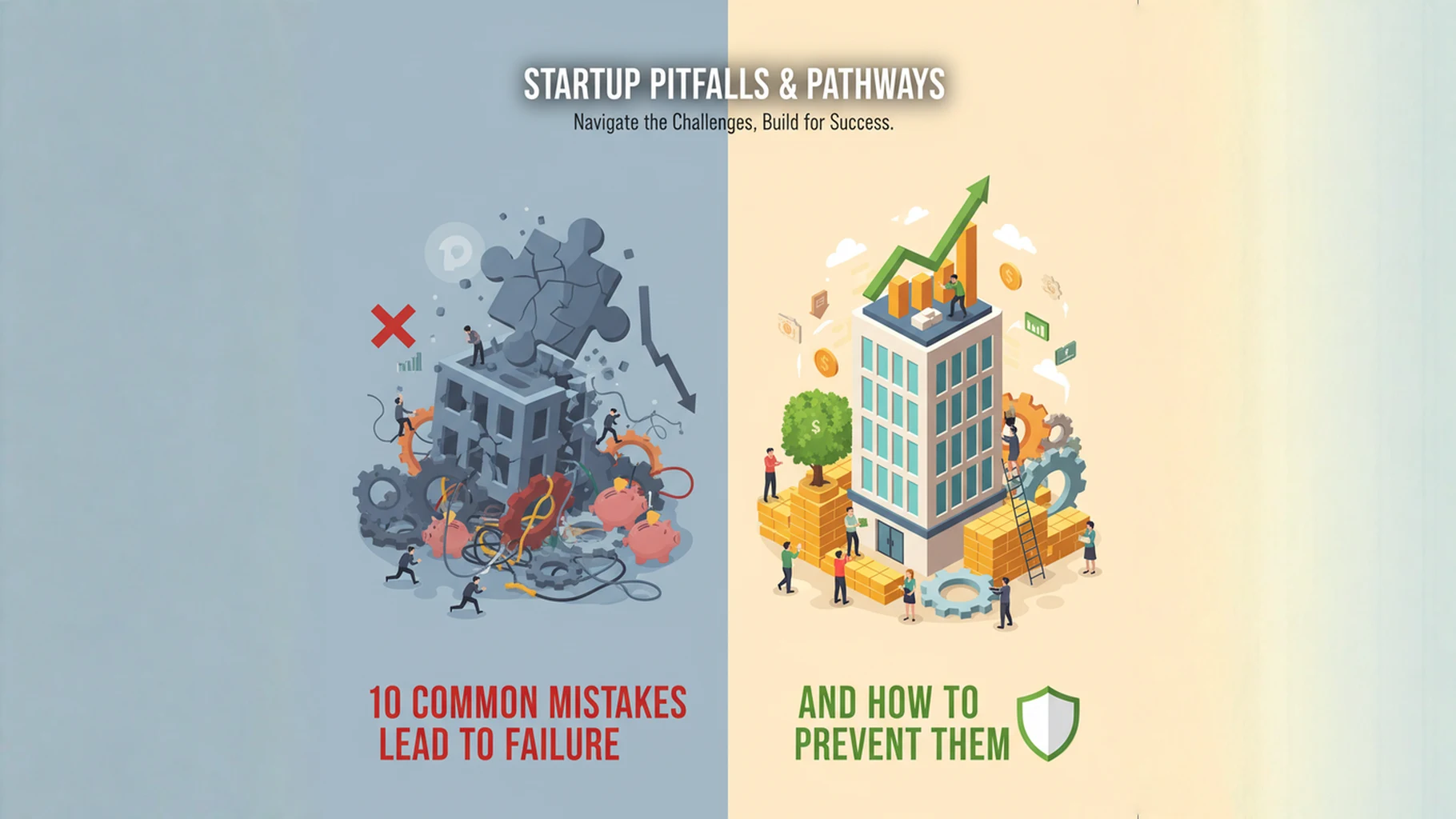The startup ecosystem has been one of the most exciting and dynamic parts of the global economy in recent years. Across industries, new companies are disrupting traditional ways of doing business and offering innovative solutions to modern problems. However, for every success story like Zomato, Ola, or Flipkart, there are countless startups that fail to make it past the first few years. Studies consistently show that nearly 90% of startups shut down within five years of launch.
The reasons for failure are many, but a closer look reveals common mistakes that founders repeatedly make. Recognizing these pitfalls early and taking corrective action can make the difference between thriving and shutting shop.
1. Lack of Market Research and Product-Market Fit
One of the most frequent causes of startup failure is the absence of thorough market research. Many entrepreneurs rush to build a product or service they believe is unique, without validating whether there is actual demand for it. A solution, no matter how innovative, will fail if it doesn’t address a real customer pain point.
Prevention Tip: Conduct surveys, focus groups, and competitor analysis before launching. Build a minimum viable product (MVP) and test it with potential users to ensure product-market fit before scaling.
2. Poor Financial Management
Startups often face funding challenges, but mismanagement of available funds makes the problem worse. Overspending on non-essential items, underestimating operational costs, or failing to maintain a financial buffer can quickly drain resources.
Prevention Tip: Create a realistic financial plan with clear budgets for product development, marketing, and operations. Track cash flow closely and avoid unnecessary expenses. Seek advice from financial mentors to manage the runway effectively.
3. Weak Business Model
Some startups launch with an exciting idea but no sustainable revenue model. Depending too heavily on external funding without planning for profitability can backfire when investors pull back.
Prevention Tip: Design a business model that demonstrates how revenue will be generated and sustained over time. Regularly evaluate and adapt the model to changing market conditions.
4. Hiring Mistakes
Startups often hire in haste, either to fill gaps quickly or to cut costs by bringing in underqualified staff. A weak team can slow progress, cause internal conflicts, and ultimately derail the business.
Prevention Tip: Focus on quality over quantity when hiring. Look for people who share the company’s vision and bring complementary skills. Building a small, strong team is far better than having a large, inefficient one.
5. Ignoring Customer Feedback
Entrepreneurs sometimes become so attached to their vision that they dismiss customer feedback. This creates a disconnect between what is offered and what customers actually need.
Prevention Tip: Encourage constant communication with customers. Use reviews, social media engagement, and feedback loops to refine the product or service. Being adaptable to customer needs ensures relevance in a competitive market.
6. Poor Marketing and Branding
Even the best products fail without effective marketing. Many startups underestimate the importance of branding and visibility, assuming that customers will naturally find their offering.
Prevention Tip: Invest in a strong marketing strategy that combines digital and offline channels. Build brand credibility through storytelling, social proof, and consistent communication. Marketing should be a continuous process, not an afterthought.
7. Leadership and Vision Gaps
Sometimes, the issue lies at the top. A lack of clarity in leadership, conflicting visions among co-founders, or an inability to make tough decisions can create instability. This often results in a loss of direction and investor confidence.
Prevention Tip: Define clear roles and responsibilities among founders. I would like you to maintain transparency and open communication within the leadership team. Bringing in experienced advisors or mentors can also help guide strategic decisions.
8. Scaling Too Quickly
While growth is every startups dream, expanding too fast without the right infrastructure or customer base can lead to disaster. Rapid hiring, overproduction, or premature global expansion often stretches resources too thin.
Prevention Tip: Scale gradually, based on proven demand and operational readiness. Focus on strengthening core markets before branching out. Sustainable growth is better than unsustainable expansion.
9. Neglecting Legal and Compliance Issues
In the race to innovate, startups sometimes overlook critical legal and compliance requirements. This can include failing to protect intellectual property, ignoring tax obligations, or not adhering to labor laws. Such oversights can result in lawsuits, penalties, or shutdowns.
Prevention Tip: Seek legal advice early in the journey. Register trademarks, patents, and ensure proper documentation for contracts and agreements. Compliance builds trust with customers, partners, and investors.
10. Resistance to Change
Markets evolve rapidly, and startups that fail to adapt often find themselves obsolete. Clinging to outdated models or ignoring technological advancements can erode competitive advantage.
Prevention Tip: Stay agile and ready to pivot when necessary. Encourage a culture of innovation and continuous learning within the team.
Conclusion
While failure is a natural part of the startup ecosystem, many of the common mistakes that lead to downfall are preventable. The most successful entrepreneurs are those who learn from failures — their own and others’ — and implement strategies that prepare them for challenges ahead. Startups that prioritize research, customer engagement, sound financial practices, and adaptability stand a far better chance of not just surviving but thriving in today’s competitive environment.
For deeper insights into India’s entrepreneurship and innovation roadmap, you can explore NITI Aayog, the government’s policy think tank.
Explore more startup stories at EQMint Startup News.
Disclaimer: This article is based on information available from public sources. It has not been reported by EQMint journalists. EQMint has compiled and presented the content for informational purposes only and does not guarantee its accuracy or completeness. Readers are advised to verify details independently before relying on them.









